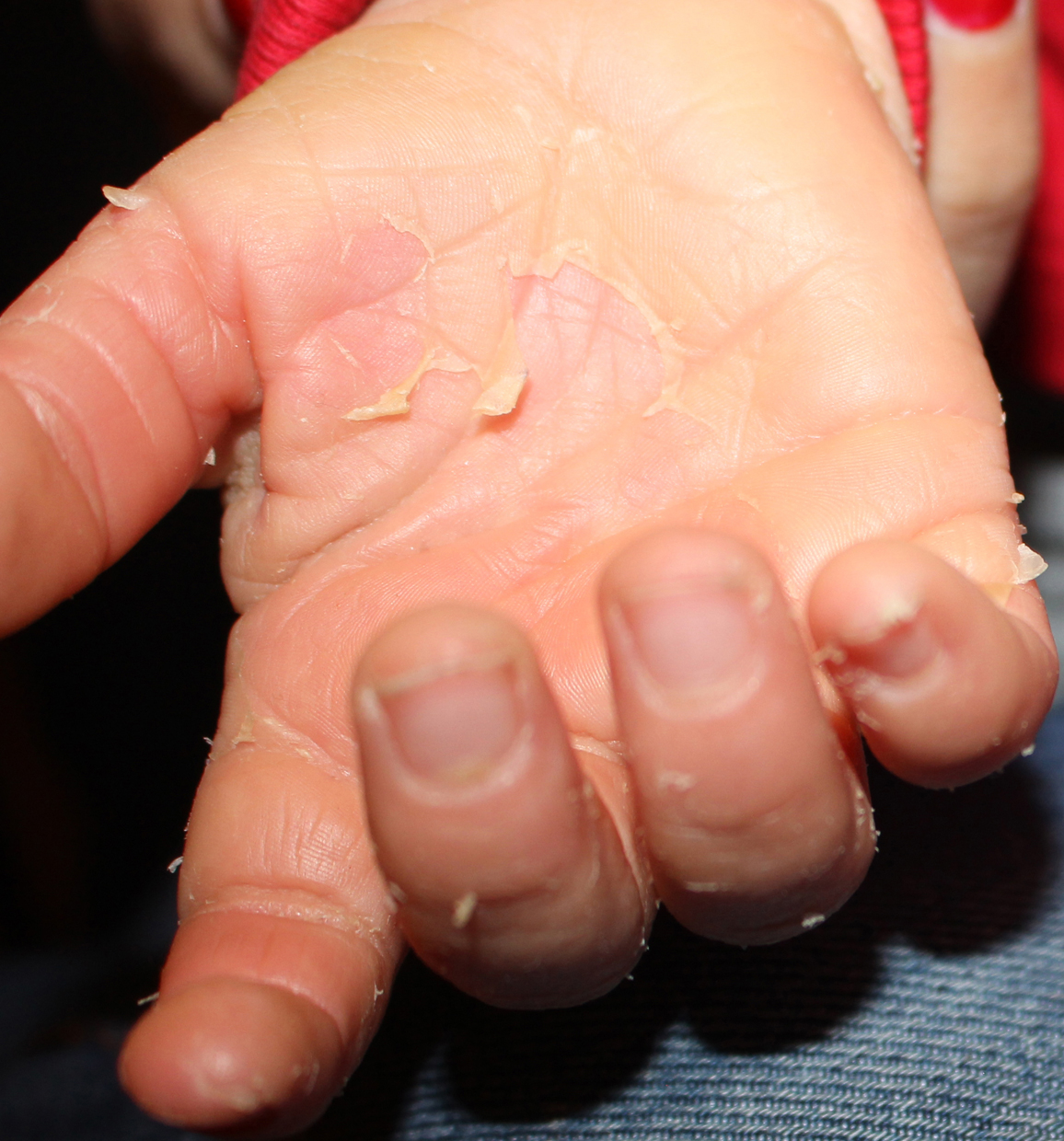Acral peeling syndrome.

Downloads
DOI:
https://doi.org/10.26326/2281-9649.27.4.1501How to Cite
Abstract
The acral peeling syndrome (APS) is an inherited autosomal recessive skin disorder that affects the hands and feet. It is characterized by intracorneal or between the horny and granular layer cleavage favored by minimal trauma or humidity. APS is due to a homozygous mutation of the gene encoding for transglutaminase 5 (TGM5). TGM5 plays a significant role in the cross-linkages of structural proteins that form the corneum scaffold and is particularly represented at the extremities. APS is also linked to mutations of other genes, especially CSTA which encodes for cystatin A. APS is heterogeneous also clinically due to the existence of generalized variant and localized forms of the face (2), due to the possible presence of hyperhidrosis (1) as in our case, erythema, pigmentation, hyperkeratosis (2), vesicles and blisters especially in early years, making the differential diagnosis from epidermolysis bullosa simplex difficult.
